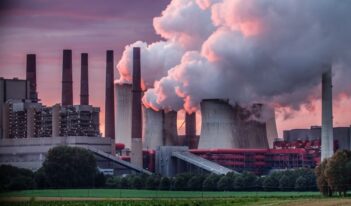
Recently proposed carbon curbing plan in U.S. sparks varied reactions abroad.
Two degrees Celsius. That is the maximum global temperature increase scientists believe the planet can withstand while avoiding the most devastating effects of climate change. It is also the goal agreed upon by UN members in the 2009 Copenhagen Accord.
Prospects for avoiding more than a two-degree temperature increase may have improved with the recent announcement of the U.S. Environmental Protection Agency’s (EPA) proposed rule to curb carbon emissions. The newly proposed rule calls for a 30% reduction in carbon emissions from the U.S. power sector by 2030. Some observers believe that this plan could spur real progress towards reaching a global deal, not necessarily because it is exceptionally ambitious but rather because it may reflect a changing tone, indicating that the United States is serious about addressing climate change.
Since the announcement of the EPA proposal, the international response has varied. UN Secretary General Ban Ki Moon has praised the proposal for taking “a significant step toward reducing global greenhouse gas emissions.” Christiana Figueres, Executive Secretary of the United Nations Framework Convention on Climate Change (UNFCC), has similarly lauded the proposal, stating that it could “spur others in taking concrete action.”
However, the European Union’s Commissioner for Climate Action Connie Hedegaard offered more cautious praise, calling for greater action. Still others, especially representatives from small island nations, have characterized the EPA proposal as too little and “too late.”
The proposed EPA rule, which was released earlier this month, would target emissions from existing power plants. However, the 30% reduction target contained in the proposal is based on 2005 emissions levels, a near peak emissions year in the US. By contrast, the UN uses the baseline year of 1990, which had far lower emissions levels. Nevertheless, the EPA plan will undoubtedly help the US fulfill its commitment of a 17% reduction in total emissions by 2020, which President Obama pledged in the 2009 Copenhagen Accord.
The 17% pledge is based on 2005 emissions levels, which only amounts to a 3.5% reduction from 1990 levels. This goal appears far less ambitious when contrasted with the EU’s pledged 20% reduction from 1990 levels, which it is on track to meet well in advance of the 2020 deadline. Still, the EPA’s proposal would presumably edge the country closer to meeting its pledged target, and may give the U.S. – the world’s second largest carbon emitter – greater leverage in upcoming climate talks to reach a new climate agreement.
However, many observers hoping for reductions in greenhouse gas emissions continue to be concerned over the embattled debate in the U.S. over climate change regulation. The Obama Administration is relying on the EPA to undertake climate change policy because legislative avenues have proven to be closed.
Some skeptics question whether the Obama Administration’s reinvigorated stance on climate change will outlive the 2016 presidential election. From the standpoint of achieving an international agreement, such a prospect is particularly troublesome, as the current international negotiations are geared towards reaching a binding agreement in 2015. However, if that agreement takes the form of a treaty, rather than a less formal collection of voluntary national pledges as the U.S. has pushed for, the U.S. would need Congress to ratify it. The rancorous climate debate in U.S. domestic politics raises uncertainty of whether ratification would be possible, and could threaten the impact of any global deal.
Of course, the announcement of EPA’s proposed rule may on its own fail to provide enough momentum to result in an international agreement. A deal without China is unlikely and would prove ineffective. Yet, China continues to see itself as a growing economy that should have less aggressive obligations than the U.S. Additional uncertainty comes from India, another major emitter. With a low per capita income and a rapidly growing population, India has constraints unlike those facing the U.S. However, its low-lying coastal plains do provide it with different interests in climate change policy.
To complicate international negotiations further, Australia – once a leader on climate action – appears recently to have shifted its posture over climate policy. Prime Minister Tony Abbott has moved to repeal the nation’s carbon tax, declined to join in on an upcoming UN climate summit, and is attempting to form an alliance of “like-minded countries,” such as possibly Canada.
Prospects for a global deal on climate change will become clearer in the coming months, as a number of key international meetings on the issue are slated to take place. The recently concluded UNFCCC’s climate conference in Bonn, Germany, did not produce any real consensus on what direction will be taken. But UN Secretary General Ban Ki Moon will host a climate summit for world leaders this September in New York, which is expected to bring in additional nations’ pledges. This December, in Lima, Peru, countries will seek to negotiate a draft text based on the discussions in Bonn. All these talks are leading up to the UN Climate Change Conference in Paris next year, where countries have agreed to try to reach a binding agreement. It is unclear as of yet what form this agreement will take, but if it is reached it is expected to take effect starting in 2020.



